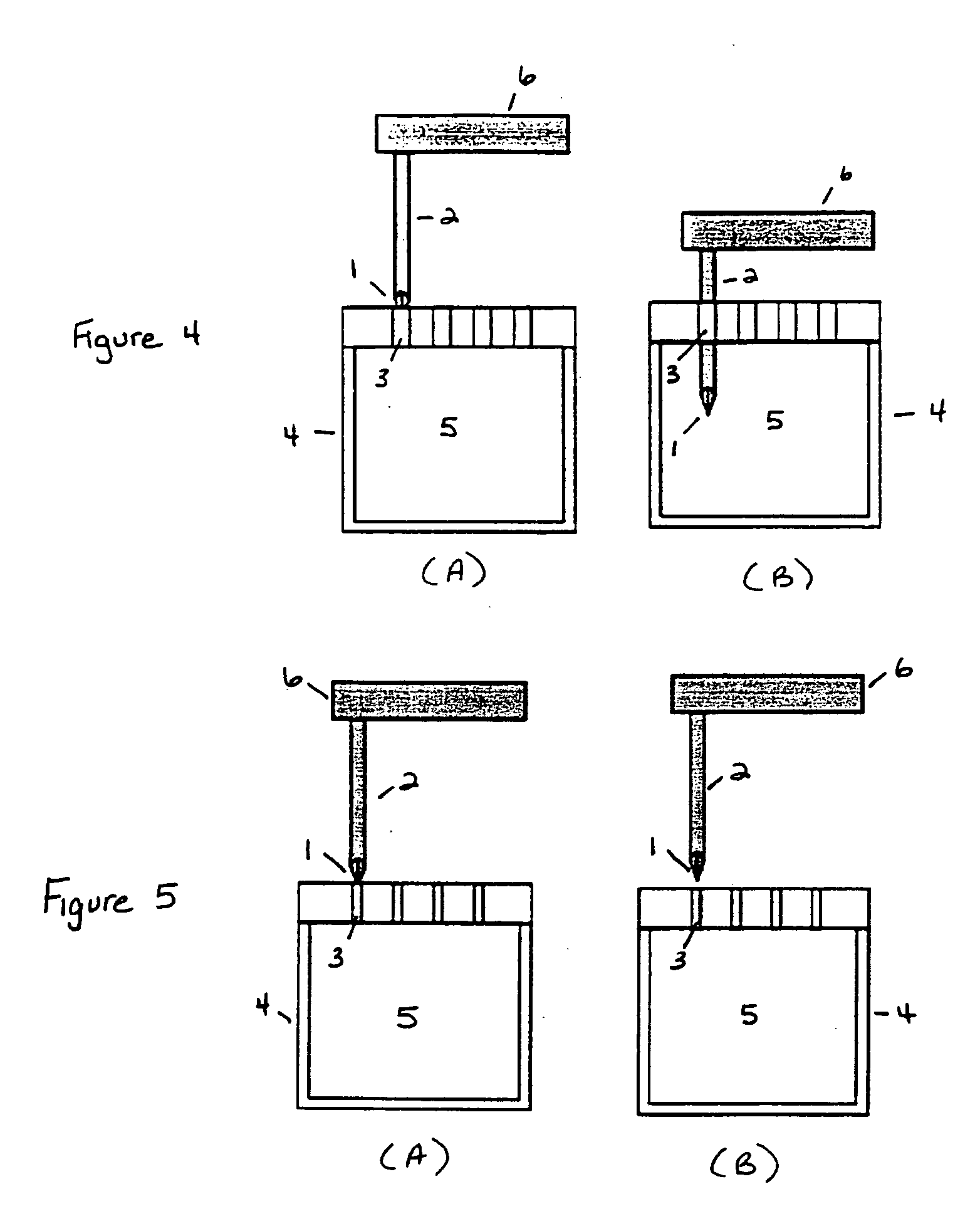Devices and methods for producing microarrays of biological samples
a technology of biological samples and microarrays, which is applied in the direction of nucleotide libraries, laboratory glassware, manufacturing tools, etc., can solve the problems of high labor intensity, high cost, and excessive material on the microarrays, and achieve the contamination of array material and probe plate material, and the material spotted on the array may yield overlapping spots
- Summary
- Abstract
- Description
- Claims
- Application Information
AI Technical Summary
Benefits of technology
Problems solved by technology
Method used
Image
Examples
Embodiment Construction
[0048] The present invention is directed to systems and methods for producing microarrays using an improved slide platform and vacuum manifold, and variable pin contact velocity. FIG. 9 shows a view of a preferred microarrayer. The invention may be used with any suitable microarrayer, such as the SDDC-2 microarrayer (The Microarray Centre; Princess Margaret Hospital / Ontario Cancer Institute, Toronto, Canada; Virtek Vision International Inc. and Engineering Services Inc.).
[0049] Vacuum Manifold.
[0050] One embodiment of the present invention (see FIGS. 4(A), 5, and 6) relates to a vacuum manifold 4 for removing liquid from microarray spotting members 2 after spotting, preferably comprising a plate with channels or holes 3 drilled in the plate, the holes leading to a chamber 5 which is connected to a source of vacuum. Each spotting member 2 is placed in or near a hole on the plate; liquid on the spotting members, typically a cleaning solution, is drawn away by the pressure created by...
PUM
| Property | Measurement | Unit |
|---|---|---|
| Length | aaaaa | aaaaa |
| Length | aaaaa | aaaaa |
| Diameter | aaaaa | aaaaa |
Abstract
Description
Claims
Application Information
 Login to View More
Login to View More - R&D
- Intellectual Property
- Life Sciences
- Materials
- Tech Scout
- Unparalleled Data Quality
- Higher Quality Content
- 60% Fewer Hallucinations
Browse by: Latest US Patents, China's latest patents, Technical Efficacy Thesaurus, Application Domain, Technology Topic, Popular Technical Reports.
© 2025 PatSnap. All rights reserved.Legal|Privacy policy|Modern Slavery Act Transparency Statement|Sitemap|About US| Contact US: help@patsnap.com



